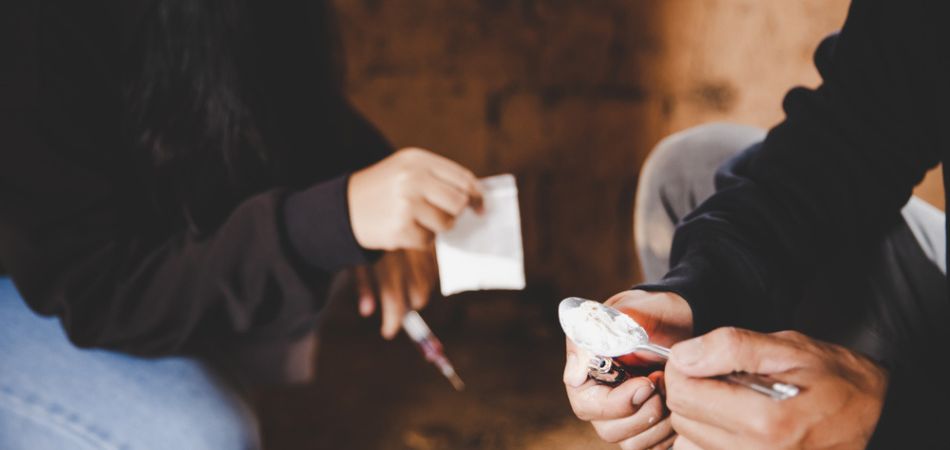Last Updated:
August 12th, 2025
Substance abuse affects more children than most people recognise. Research shows that over 14,000 children under 17 were in treatment for either alcohol abuse or drug abuse last year. Our heart sinks to imagine the number of children without access to the treatment they need.
This help guide can support parents, guardians, educators and caregivers who are worried about substance use in a child. We hope your timely help reaches them before addiction starts to take control.
Why might a child turn to substances?
The factors that can contribute to a child tragically turning to substance use are varied and multifaceted. In many ways, children and adolescents can be just as vulnerable as adults to the influences and drivers of drug use.
However, children have not yet had the same experiences adults have had. They may not comprehend the extent of damage drug use can cause. They might also try a drug for the first time innocuously, giving little credence to the dangerous capacity for addiction to form.
However, as a general point, substance use in young people doesn’t stem from nowhere. It often has a tragic background in some of these common contributing factors:
- Peer pressure and social norms: Children can be especially vulnerable to social norms and pressures from those around them. Perhaps more so than in adulthood, a child’s friend can function as a buddy who will partake in the same risks as them.
- A coping mechanism for trauma: Adverse Childhood Experiences (ACEs) are known to have a causal relationship with the development of addictions. Many adults are shackled to their addictions through a handful of traumatic experiences in childhood. While children may not have had much time to heal from recent trauma, they can still be utterly devastated by violence, abuse, neglect, or personal loss.
- Family influence and inherited behaviours: Aside from external events and environmental influences, there may be internal forces playing a role in the likelihood of addiction. Studies suggest that children with a substance-addicted parent are up to 4.3 times more likely to develop a substance use disorder (SUD) themselves.
Why is early recognition so critical?
When a child sadly turns to substance use, it rarely fails to escalate into something more dangerous. The earlier it is identified, the greater the chance a parent or carer has to interrupt the cycle before long-term harm seeps in.
Children’s brains and bodies are, of course, still developing, which means substance use is likely to interfere with:
- Cognitive development
- Emotional regulation and impulse control
- Physical, mental and social development
- Academic performance and school attendance
If you’re able to spot the signs early and take action, you may just be providing a real lifeline that reduces or completely removes the risk of addiction persisting into adulthood.
What are the warning signs of substance abuse in children?
Signs of substance use in children may manifest in subtler ways than they do in adults. One reason is that physical signs can be more visible in an older body, or the fact that adults can generally express the way they’re feeling more clearly than a child.
Being able to discern the signs may be more or less difficult, depending on your relationship with the child. A parent may see things that a teacher does not, for example.
While it is important to make space for childhood behaviours that may just stem from mood swings or adolescent defiance, it’s even more critical to recognise signs that substance use is becoming a deeper issue.
Physical signs to watch for
Some physical signs may be the easiest to spot in a child who has taken drugs. These include:
- Bloodshot eyes or frequent nosebleeds
- Uncharacteristic tiredness or hyperactivity
- Frequent headaches or nausea
- Sudden fluctuations in weight, or appetite
- Smelling of the substance in question, like smoke, alcohol or unusual chemicals
Psychological signs to watch for
The psychological signs of drug use in children may be harder to distinguish, as the age of the child will have a great effect on their typical behaviour. However, some signs to watch for include:
- Unexplained anxiety or depressive episodes
- Sudden violent outbursts
- Equally sudden emotional withdrawal
- Mood swings, more extreme than usual
- Apathy or a loss of interest in once-loved activities
Behavioural shifts that can affect both
In addition to physical and psychological signs, there may also be more subtle shifts in their behaviour, which won’t be easy to spot without a strong relationship with the child. These may include:
- Failing grades or strong negative feelings toward school
- Truancy, sneaking out of class
- Hanging out with a new friend group, completely different from the last one
- Stealing money or being vague about where it goes
One or two of these signs may be concerning, yet still may not be conclusive that the child is using substances. However, if multiple symptoms appear, persist, or worsen, they may need more help than you first thought.
How can parents and carers approach the topic of drugs?
When you suspect a child may be using substances, you might be unsure even about where to start. Before heading straight into the conversation, it will benefit you to remind yourself of what you were like at their age. Communication with a child is generally enhanced when they know they aren’t being judged and they’re talking to someone who really cares.
Your goal is to open a door, not close it. Try these steps:
What to do if you suspect substance use
Even if your child denies using drugs or alcohol, your instincts and observations matter. Acting early, without overreacting, can be the key that opens the door to further help.
- Document troubling behaviours and signs: Keep a written record of the behaviours or symptoms you’re observing. Note when they occur, how often and anything else relevant to you. This can be incredibly useful if you decide to speak to a healthcare provider or school counsellor.
- Consider boundaries around expectations and consequences: Set clear, age-appropriate expectations around drug and alcohol use. Be honest about the consequences, without making empty threats. Boundaries are one of the most important forces in a child’s life, so make sure they’re consistent and fair.
- Seek guidance from those close to the child: Teachers, relatives, or close family friends might be noticing things that are in your blind spots. Getting their input can help you piece together a more complete picture of what’s going on.
- Consider a formal evaluation: If concerns persist, speaking with a GP, school counsellor, or mental health professional can lead to a professional assessment. This doesn’t automatically lead to treatment; it simply helps clarify what support your child might need.
Where can I find support for a child in my life?
If you’re worried that a child in your care is struggling with substance abuse, don’t carry the burden alone. Early action can make all the difference and professional support is available to guide both you and your child through recovery.
At Oasis Runcorn, we offer safe, compassionate care for young people dealing with addiction and emotional challenges. With a focus on understanding over judgement, we work closely with families to prioritise the child’s well-being.
Whether you need advice, an assessment, or simply someone to talk to, our team is here. Reach out today—no child should face these struggles without support.
(Click here to see works cited)
- “Children and Young People’s Substance Misuse Treatment Statistics 2023 to 2024: Report.” GOV.UK, www.gov.uk/government/statistics/substance-misuse-treatment-for-young-people-2023-to-2024/children-and-young-peoples-substance-misuse-treatment-statistics-2023-to-2024-report
- “About Adverse Childhood Experiences.” Centers for Disease Control and Prevention, Centers for Disease Control and Prevention, www.cdc.gov/aces/about/index.html
- Broekhof R, Nordahl HM, Tanum L, Selvik SG. Adverse childhood experiences and their association with substance use disorders in adulthood: A general population study (Young-HUNT). Addict Behav Rep. 2023 Mar 30;17:100488. doi: 10.1016/j.abrep.2023.100488. PMID: 37077505; PMCID: PMC10106480.



